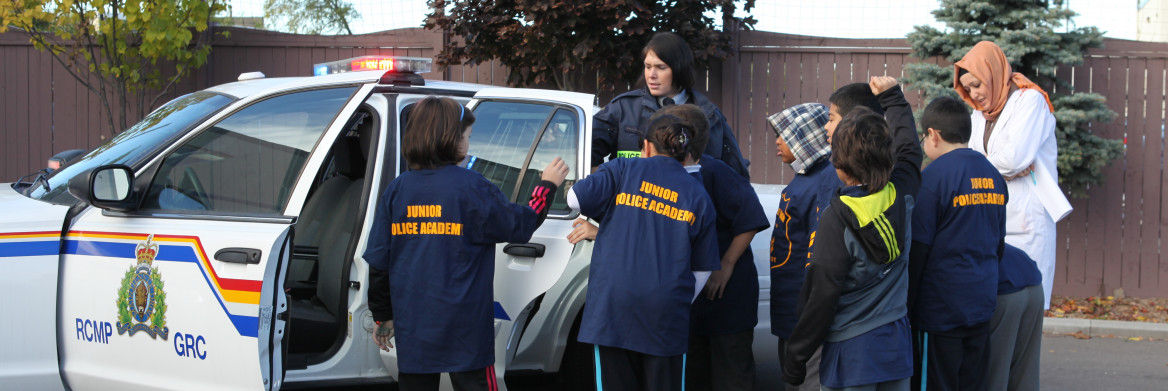When police visit schools and talk to communities, familiar topics like bullying, drugs and internet safety are often the focus. While these issues are important, broader topics such as terrorism often get pushed to the wayside.
Related link
The Ontario RCMP's Public Engagement Unit (PEU) is working hard to bring that national security discussion locally — with a focus on youth.
"We talk about domestic violence, gang violence, schoolyard violence, but we don't talk about political violence,
" says Lamia Aston, a strategic analyst with PEU in the Greater Toronto Area and southwestern Ontario. "We need to address that vulnerability, especially when it comes to youth.
"
In Ontario, the RCMP takes a secondary role when it comes to law enforcement. Everyday policing duties like traffic stops, responding to calls and neighbourhood patrols are carried out by the municipal and provincial police of jurisdiction. The RCMP steps in when police come across files that deal with national issues — like terrorism.
Regional Integrated National Security Enforcement Teams (INSETs) led by the RCMP investigate criminal acts of terrorism and extremism in Canada. The PEU is a public engagement branch of Ontario's regional INSET based in Toronto. They work closely with local police of jurisdiction to build community relationships.
"We're delivering the right message and tools to the right people to build trust and prevent radicalization,
" says Supt. Lise Crouch, the assistant criminal operations officer in charge of southwestern Ontario's INSET. "We're starting community-led, police-supported, sustainable grassroots initiatives.
"
Community connections
When the PEU first began in 2005, they worked hard to get themselves known in the communities around Toronto. Networking and building connections were the main priorities for the small unit, which was at first poorly received by the communities.
"It was a hostile environment for police because this was shortly after 9/11. The communities were very suspicious,
" says Cpl. Param Dhillon, the non-commissioned officer in charge of the PEU. "The first step was just letting people know who we are, and what we do.
"
Since the team's focus is engagement, they had to let residents know that they weren't there to spy on people. They had to articulate that they were there to inform, educate and prevent community members from going down the path of radicalization.
"Usually when police come in, the community assumes it's for intelligence gathering,
" says Dhillon. "But we're not there to gather intelligence. We're mobilizing the community to get them to understand that this threat is real and it's not just the police who can solve this. We need the community.
"
To build relationships with residents, the PEU connected with trusted community members: political leaders, religious leaders, school representatives, parents and anyone else who held well-respected positions. After five years of building up their presence and winning-over respected community leaders, Dhillon says residents slowly started coming around. "They began to see that our efforts were genuine.
"
Protective factors
After connecting with key community leaders, the next step for the PEU was closing the gap between the community and police. The unit began holding open town-hall meetings led by Supt. Lise Crouch, where residents had the opportunity to question the RCMP on anything that was on their mind.
"The community appreciated that they were being heard,
" says Crouch. "The fact that they could speak to the top command, closed the gap very quickly and helped us build that critical trust.
"
The unit also actively holds workshops and events to inform community leaders about recruitment trends, how the internet and social media is used to leverage ideologies and how to notice signs of radicalization, especially in more vulnerable youth populations.
"Every child, when they go down the path to radicalization, they've somehow become disengaged,
" says Dhillon. "Prevention means going back to basics, and building up protective factors, or positive influences, in young people.
"
Now that the PEU has accomplished their initial goal of connecting to the community, they're homing-in on preventing radicalization in youth by spreading the word on protective factors. They're talking to community leaders about the importance of promoting strong family and social support, positive self-esteem, community engagement and critical decision making skills — all factors that can prevent youth from engaging in political violence down the road.
"Engaging as many as we can is the key to our success,
" says Crouch. "We're working locally to build national resilience against terrorism.
"
